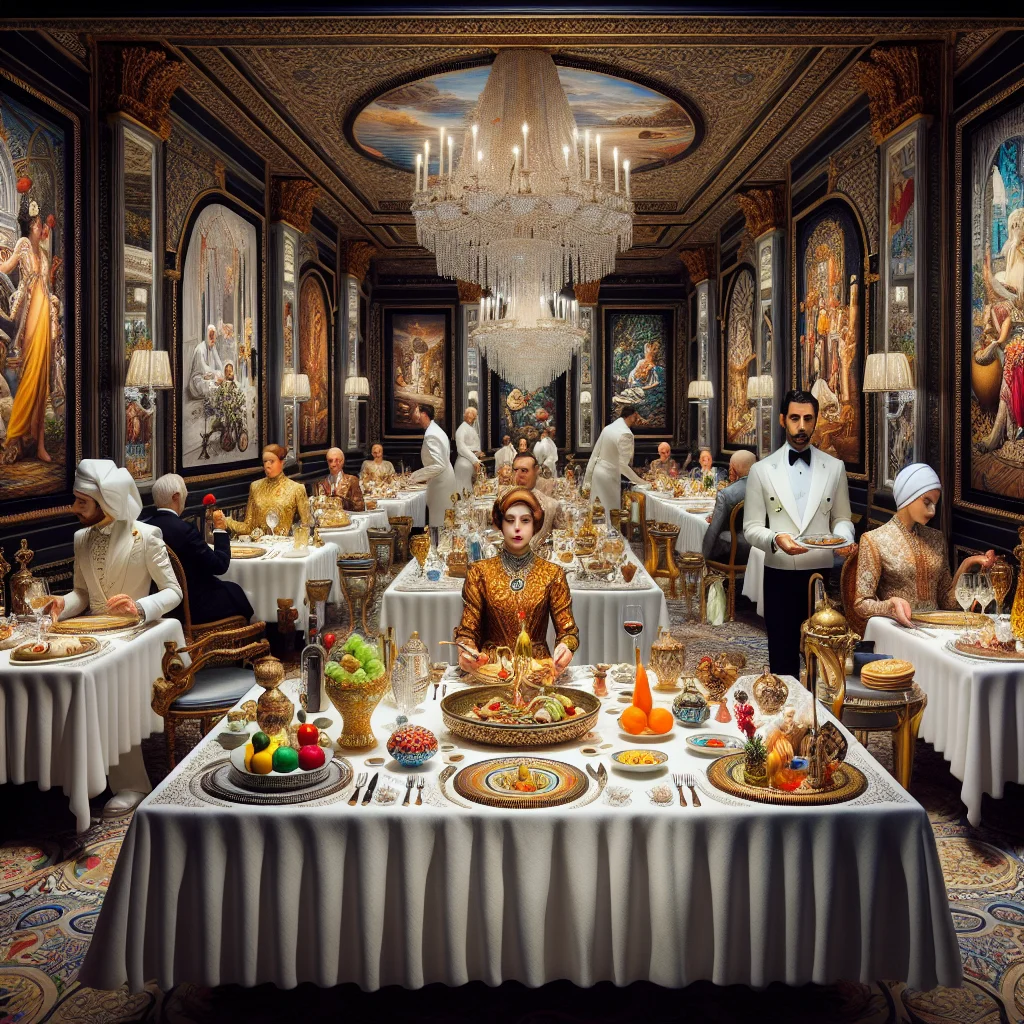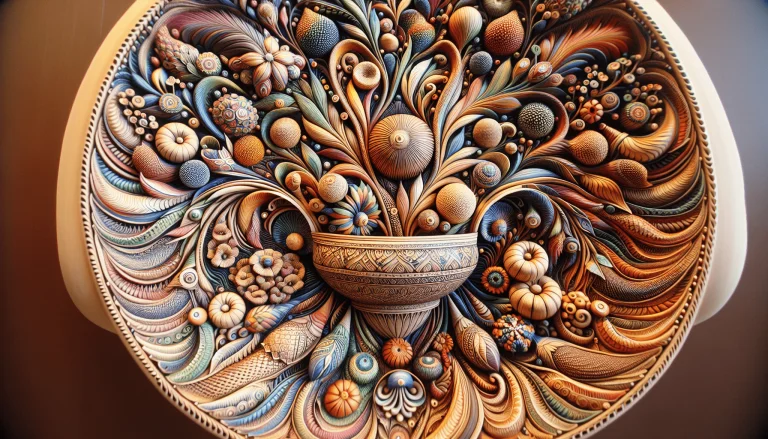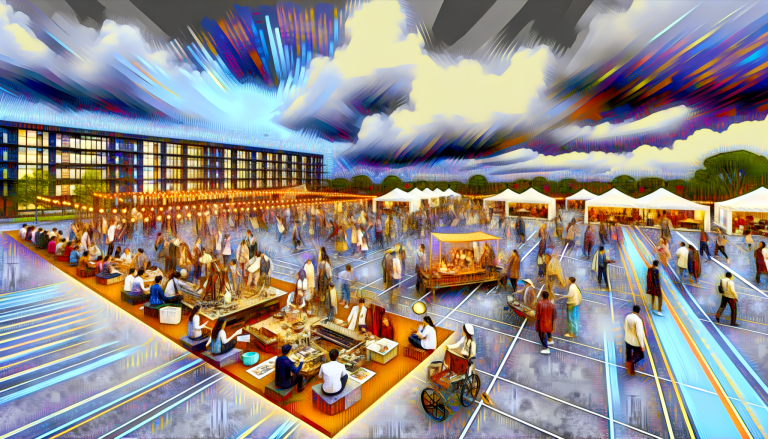Culinary Opulence: Michelin-Star Dining On Your Travels
Indulge your senses and embark on a journey of culinary opulence like no other. At Best Travel Dealz, we understand that the discerning traveler seeks only the finest experiences, and our latest article “Culinary Opulence: Michelin-Star Dining On Your Travels” aims to fulfill that desire. From savoring exquisite dishes crafted by world-renowned chefs to immersing yourself in the vibrant gastronomic scenes of renowned cities, this article uncovers the secret to unlocking the most delectable dining adventures across the globe. Join us as we explore the epitome of luxury dining, allowing you to satisfy your wanderlust and tantalize your taste buds at the same time.
Understanding Michelin Stars
Defining Michelin stars
When it comes to fine dining, nothing quite compares to the prestigious Michelin star. Michelin stars are a highly coveted accolade given to restaurants by the Michelin Guide, a revered authority in the culinary world. These stars serve as a mark of excellence, indicating that a restaurant has met the highest standards of quality and creativity in its cuisine.
The Michelin star rating system consists of one to three stars, with three being the highest honor. A one-star rating means the restaurant is considered very good in its category, while two stars signify excellent cooking that is worth a detour. The coveted three-star rating is reserved for exceptional establishments that offer exceptional cuisine, worth a special journey.
History of Michelin star system
The Michelin star system originated in the early 20th century when the Michelin Guide was first published. Initially, the famous tire manufacturer Michelin created the guide as a way to encourage motorists to travel and explore new places, thus increasing the demand for tires. The guide featured detailed maps, useful information for travelers, and a list of recommended restaurants.
In 1926, Michelin introduced the star rating system to the guide, initially awarding stars to hotels and restaurants in France. The purpose was to distinguish restaurants offering exceptional cuisine and service. Over time, the Michelin star system gained immense prestige and became a symbol of culinary excellence worldwide.
Criteria for awarding Michelin stars
The criteria for awarding Michelin stars are famously shrouded in secrecy. The Michelin Guide’s anonymous inspectors rigorously evaluate restaurants based on various factors, including the quality of the ingredients, mastery of flavors, cooking techniques, consistency, and creativity. Additionally, factors like service, ambiance, and value for money also play a role in the final rating.
Inspectors visit restaurants unannounced and pay for their meals to ensure fairness and objectivity. The evaluation process is meticulous, and restaurants are under constant scrutiny even after receiving a star. This commitment to maintaining high standards ensures that Michelin-starred restaurants consistently deliver exceptional dining experiences.
Why Michelin Star Dining Is A Must For Foodies
The artistry of Michelin star meals
Michelin-starred dining is a feast for the senses. It is a culinary art form that combines creativity, craftsmanship, and passion to create extraordinary dishes. Each plate is meticulously crafted, with attention paid to every detail – from the balance of flavors to the presentation. Chefs often push the boundaries of gastronomy, experimenting with unique ingredients and innovative techniques to create memorable dining experiences.
The unique culinary experiences
A meal at a Michelin-starred restaurant is more than just a dining experience; it is a journey through flavors and textures that surprise and delight. Chefs craft menus that take diners on a gastronomic adventure, showcasing a range of dishes that reflect their culinary vision. From delicate appetizers to decadent desserts, each course offers a new taste sensation, leaving guests with unforgettable memories.
The role of the Chef
The role of the Chef in a Michelin-starred restaurant is paramount. These culinary maestros are the driving force behind the exceptional dining experiences. They are masters of their craft, trained in the art of culinary techniques from around the world. Their skill and creativity elevate dining to new heights, constantly pushing the boundaries of what is possible in the realm of gastronomy. The Chef’s dedication, attention to detail, and passion for food are reflected in every dish served at their Michelin-starred establishment.
Exploring Michelin-starred Restaurants Across The Globe
Asia’s Michelin delights
Asia has emerged as a culinary destination, with several Michelin-starred restaurants making their mark on the continent. From the vibrant street food of Singapore to the refined kaiseki cuisine of Japan, Asia offers a diverse range of culinary experiences. Cities like Tokyo, Hong Kong, and Bangkok boast numerous Michelin-starred restaurants, each offering its unique take on regional and international cuisines.
Europe’s finest Michelin restaurants
Europe, with its rich culinary traditions, is home to some of the finest Michelin-starred restaurants in the world. From the culinary capital of Paris to the gastronomic delights of Spain and Italy, Europe offers a kaleidoscope of flavors. Michelin-starred restaurants like El Celler de Can Roca in Spain, Osteria Francescana in Italy, and The Fat Duck in the UK are among the most sought-after dining destinations for food enthusiasts.
Michelin-starred dining in the Americas
The Americas also boast a vibrant Michelin-starred dining scene. In the United States, cities like New York, Chicago, and San Francisco are renowned for their Michelin-starred establishments, offering a wide range of cuisines. The culinary traditions of South and Central America are also celebrated, with restaurants in countries like Brazil and Mexico gaining recognition for their exceptional dining experiences.
The Cost of Dining at a Michelin-Starred Restaurant
Average costs of a Michelin meal
Dining at a Michelin-starred restaurant is undoubtedly a luxury experience that comes with a price tag. The cost of a meal at a Michelin-starred restaurant can vary widely, depending on factors such as the number of stars, the location, and the reputation of the Chef. On average, a three-star Michelin meal can cost anywhere from $200 to $500 per person, excluding drinks and additional expenses.
Value for money at Michelin restaurants
While dining at a Michelin-starred restaurant may be expensive, it offers exceptional value for money. The price reflects not only the quality of the ingredients but also the expertise, time, and dedication that goes into creating each dish. Michelin-starred restaurants often source the finest seasonal and local ingredients, ensuring a dining experience that is unparalleled in taste and quality.
Extras to anticipate when dining at Michelin starred restaurants
When dining at a Michelin-starred restaurant, it is important to anticipate additional expenses beyond the cost of the meal itself. Some Michelin-starred restaurants offer wine pairing options, where sommeliers expertly select wines to complement each course. These wine pairing experiences can add a significant cost to the overall dining experience. Additionally, service charges, taxes, and gratuities may also be applicable, depending on the country and the restaurant’s policies.
How to Relish a Michelin Star Dining Experience
Selecting the meal time
When planning a visit to a Michelin-starred restaurant, it is essential to consider the mealtime. Lunch reservations are often more accessible and more affordable than dinner reservations. Lunch menus at Michelin-starred establishments often offer similar culinary experiences but at a lower cost. Opting for lunch allows you to relish the exquisite cuisine without breaking the bank.
Dress code and etiquette
Michelin-starred restaurants often have dress codes, so it is important to dress appropriately for your dining experience. Business casual or formal attire is typically expected, with no shorts or flip-flops allowed. Additionally, it is important to be aware of the dining etiquette and table manners prevalent in fine dining establishments. Showing respect and observing proper etiquette contributes to a pleasant and enjoyable dining experience.
Reservations and wait times
Reservations at Michelin-starred restaurants are highly recommended, especially for popular establishments. It is advisable to make reservations well in advance to secure a table. Keep in mind that some restaurants may have limited seating, making it even more crucial to plan ahead. While wait times can vary, having a reservation guarantees a smooth dining experience without unnecessary delays.
Renowned Michelin-starred Chefs and their Signature Dishes
Profile of famous Michelin-starred Chefs
Michelin-starred restaurants are often synonymous with talented and acclaimed chefs who have shaped the culinary world. Chefs like Alain Ducasse, Thomas Keller, and Gordon Ramsay have achieved worldwide recognition for their culinary prowess and unique cooking styles. These chefs have dedicated their lives to perfecting their craft, pushing the boundaries of flavor and technique, and creating unforgettable gastronomic experiences.
Exploring their acclaimed dishes
Each renowned Michelin-starred chef has their signature dishes that have become iconic creations in the world of gastronomy. For example, Alain Ducasse’s “Soufflé Suissesse,” which delights diners with its light and fluffy texture, or Thomas Keller’s “Oysters and Pearls,” a luxurious dish that showcases the flavors of caviar and oysters. Exploring these acclaimed dishes allows one to understand the creative genius and culinary philosophy of these extraordinary chefs.
Influence of these chefs on global cuisine
The influence of Michelin-starred chefs extends far beyond their restaurants’ walls. Their innovative cooking techniques, use of premium ingredients, and commitment to excellence have shaped the culinary landscape globally. These chefs have inspired a new generation of cooks and revolutionized the way we perceive and consume food. Their contributions to global cuisine have set new standards for creativity, quality, and dining experiences.
The Art of Wine Pairing in a Michelin-Starred Restaurant
Basics of wine pairing
Wine pairing plays a vital role in enhancing the dining experience at a Michelin-starred restaurant. The art of wine pairing involves selecting the perfect wine to complement the flavors and textures of the dishes. The right wine can elevate the overall taste and create harmonious combinations on the palate. Factors like acidity, sweetness, and body are considered when choosing the ideal wine pairing.
Role of a sommelier
A sommelier, the wine expert at a Michelin-starred restaurant, is responsible for curating an exceptional wine selection and guiding diners through the wine pairing process. These knowledgeable professionals possess a deep understanding of wines, regions, and flavor profiles. They can recommend wines that not only enhance the flavors of the cuisine but also cater to individual preferences and dietary restrictions.
Unique wine pairings at Michelin restaurants
Michelin-starred restaurants often offer unique and creative wine pairings that go beyond the traditional combinations. Wine pairings may include lesser-known varieties, rare vintages, or wines from specific regions that complement the Chef’s culinary creations. These unconventional pairings can introduce diners to new flavors and enhance the overall dining experience.
Fusion Cuisine at Michelin-Starred Restaurants
Understanding fusion cuisine
Fusion cuisine is a culinary approach that combines elements from different culinary traditions, often crossing regional and cultural boundaries. It is the harmonious blend of flavors, techniques, and ingredients that creates a new and unique dining experience. Michelin-starred restaurants have embraced fusion cuisine, pushing the boundaries of culinary innovation and offering unforgettable taste sensations.
Popular Michelin-starred fusion restaurants
Several Michelin-starred restaurants have gained recognition for their mastery of fusion cuisine. For example, Nobu, a renowned restaurant with multiple Michelin stars, fuses Japanese and Peruvian flavors to create extraordinary dishes. Another example is Gaggan in Bangkok, which combines Indian and molecular gastronomy to defy traditional expectations. These restaurants showcase the exciting possibilities that fusion cuisine can bring to the dining table.
Signature fusion dishes
The fusion cuisine served at Michelin-starred restaurants is characterized by unique and boundary-pushing dishes. From the unusual flavor combinations to the innovative presentation, these creations reflect the Chef’s creativity and culinary mastery. Signature fusion dishes might include dishes like Wagyu beef tacos with truffle aioli or foie gras sushi topped with caviar – unexpected combinations that delight the palate and showcase the endless possibilities of fusion cuisine.
Michelin-starred Vegetarian and Vegan Dining
Rise of vegetarian and vegan Michelin restaurants
As the demand for vegetarian and vegan dining options has grown, Michelin-starred restaurants have responded by offering exceptional plant-based culinary experiences. A number of Michelin-starred restaurants now specialize in vegetarian and vegan cuisine, showcasing the potential for innovative flavors and techniques without the use of animal products. This shift highlights the changing landscape of fine dining and the increasing importance of sustainability.
Exploring the menu
A vegetarian or vegan dining experience at a Michelin-starred restaurant is no longer limited to simple salads or sides. Michelin-starred chefs have embraced the challenge of creating exciting and sophisticated meat-free dishes. These menus showcase the incredible versatility of plant-based ingredients, highlighting their unique flavors, textures, and colors. From hearty vegetable stews to delicate vegan pastries, diners can expect a culinary adventure that celebrates the beauty of vegetarian and vegan cuisine.
Signature vegetarian and vegan dishes at Michelin restaurants
Michelin-starred vegetarian and vegan dishes are designed to impress even the most discerning palates. Chefs incorporate innovative techniques and creative combinations of ingredients to create dishes that are rich in flavor and visually stunning. Signature dishes can include anything from a creamy truffle risotto with wild mushrooms to a vibrant vegan sushi platter bursting with seasonal vegetables. These dishes prove that vegetarian and vegan cuisine can be indulgent and sophisticated, offering something truly exceptional for plant-based food enthusiasts.
Michelin Stars Vs. Other Culinary Awards
An overview of other culinary awards
While Michelin stars are the most renowned culinary accolades, other awards also recognize and celebrate excellence in the culinary world. Awards like the World’s 50 Best Restaurants and the James Beard Awards honor outstanding restaurants and chefs globally and in specific regions. These awards provide a broader perspective on culinary achievements, highlighting the diversity and innovation within the industry.
Comparing the prestige of Michelin stars and other awards
Michelin stars are often considered the pinnacle of culinary recognition due to their long-standing history and reputation for meticulous evaluation. The Michelin Guide’s anonymous inspectors and the stringent criteria for receiving stars contribute to their unparalleled prestige. However, other awards like the World’s 50 Best Restaurants have gained significant recognition and are highly regarded by chefs and food enthusiasts. Each award holds its own unique value and contributes to a restaurant’s reputation.
Impact of Michelin stars and other awards on a restaurant’s reputation
The Michelin star rating has a profound impact on a restaurant’s reputation and success. Acquiring Michelin stars can attract international attention, leading to increased reservations and demand for the Chef’s cuisine. Michelin-starred restaurants often become destinations in themselves, drawing food enthusiasts from around the world. Similarly, other culinary awards can significantly raise a restaurant’s profile and establish its standing in the culinary landscape. These accolades serve as a benchmark for excellence and contribute to a restaurant’s reputation as a culinary destination.
In conclusion, Michelin-starred dining offers a world of culinary excellence and remarkable experiences. The Michelin star rating system, with its stringent criteria, continues to play a significant role in recognizing and celebrating culinary mastery. Whether it’s exploring Michelin-starred restaurants across the globe, relishing the creativity of renowned chefs, or savoring vegetarian and vegan masterpieces, each dining experience delivers a symphony of flavors, textures, and artistry. Michelin-starred dining is truly a must for foodies seeking extraordinary and unforgettable gourmet experiences.






